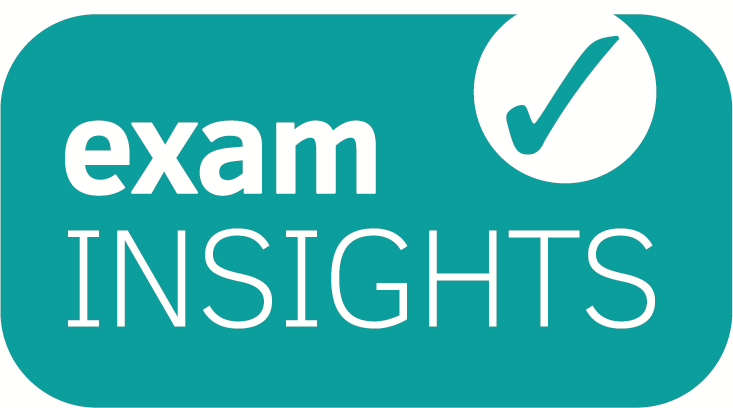
The examiners’ reports for the 2019 series reported many positives from candidate responses, and give lots of examples of excellent answers. They also noted some common areas where candidates could improve their work. There are summaries below to help students avoid this for future exams.
1: Part a) questions. Students generally answer these questions well. However, there are a couple of things for students and teachers to be aware of that did cause some candidates to lose marks. Firstly, candidates must write three short sentences, not give three examples in a list. An example of this is a student getting 1/3 for the answer ‘Three Christian places of pilgrimage are Iona, Taize and Jerusalem.’ These three examples each written into a sentence would get 3/3. Candidates must also pay close attention to the wording of the question and ensure their examples do answer what is asked. Some examples of this were students writing about other events in the Paschal Mystery when asked about the resurrection (Outline 3 events of the resurrection of Jesus), giving Mecca as a place of Christian pilgrimage (Outline 3 places of Christian pilgrimage), or giving an amount for Zakah, not a reason for it (Outline 3 reasons for giving Zakah).
2: Part b) questions. Students need to make two developed points in these questions to gain the 4 marks. It is very important that students know the specialist terms as these are frequently used in the questions (for example Rosary, Ramadan, design argument), and students will need to be specific in their explanations of these. It is also vital that students explain rather than just describe in their answers, for example a question asked them to explain why the four marks of the church are important, and some candidates simply described what they were. Students should then give a piece of extra information to count as the development. Students should not give more than 2 reasons – this will waste their time and will not lead to more marks.
3: Part c) questions. These are very similar to part b) questions, so all of the advice for this question also applies. However, there is a 5th mark for referring to a source of wisdom and authority (SOWA). Some useful things to note when referring to the SOWA:
- Candidates do not have to reference a quote, or quote it word-for-word.
- If they state that a verse is John 1:18 and then quote another verse from John, this can be awarded. Candidates are not held to precise verses, but it must be the correct book of the Bible.
- If candidates give a paraphrase and then put the wrong reference in brackets, the paraphrase can receive the mark and the bracketed reference is ignored.
- If candidates quote Jesus and it was Paul or vice versa and the quote is not accredited to that person, it is not awarded.
The SOWA cannot be credited twice; meaning it cannot be the development of a point AND the source to get the ‘extra’ mark compared to the part b) questions.
4: Part d) questions. These questions proved very difficult for candidates to gain high marks – there are not examples of level 4 answers in many of the examiner reports. However, there is plenty of advice which students can take on board to ensure they are writing good responses to part d) questions, and a decent number of level 3 answers.
Firstly, candidates should read the bullet point instructions carefully. If they do not meet all of these instructions, they will be limited to level 2. Also, if candidates give views which are not asked for, for example non-religious views when only asked about a religion, these will not gain credit.
Secondly, answers which just outline arguments for and against the statement, and have a conclusion, will be limited to around 3 or 4 out of 12. Candidates need to try and appraise or evaluate the arguments given, offering reasons why they are strong/weak/convincing/supported/undermined and so on. This needs to be more detailed than the old part d) style, which just required arguments on each side to be identified. Students need to comment on the validity of arguments as they present them in their essays.
The evaluation should then inform the conclusion, which would make it ‘justified’. One examiner report suggests thinking about it in this way: ‘argue not if it is true or false, but why reasons given “for” can be disputed by alternative views’.
Thirdly, students should be encouraged to answer these questions, even if they struggle to appraise the arguments. If they can identify arguments for and against they will get some credit at level 1, and will also be able to pick up SPAG marks in 2 of the 4 part d) questions.
5: General advice for students.
- Check your timing – don’t run out of time for the final section. Time is most likely to be wasted by writing too much in your answers to parts a-c in each section.
- Attempt every question, even if you don’t think you can identify the required amount of reasons or arguments.
- Know the key and technical terms – these are vital for all types of question.
- Read the questions carefully! Make sure you meet all the requirements asked for in the bullet points in part d) questions, and that your reasons in b), c) and d) are closely linked to the question, not just generic teachings.
Mark Shepstone is an assistant headteacher at an 11-19 school in North Suffolk, and was previously a head of department and 2 Norfolk schools. He has been an examiner with Edexcel for 6 years.
Additional blogs on exam insights here https://educationblog.oup.com/?s=exam+insights
